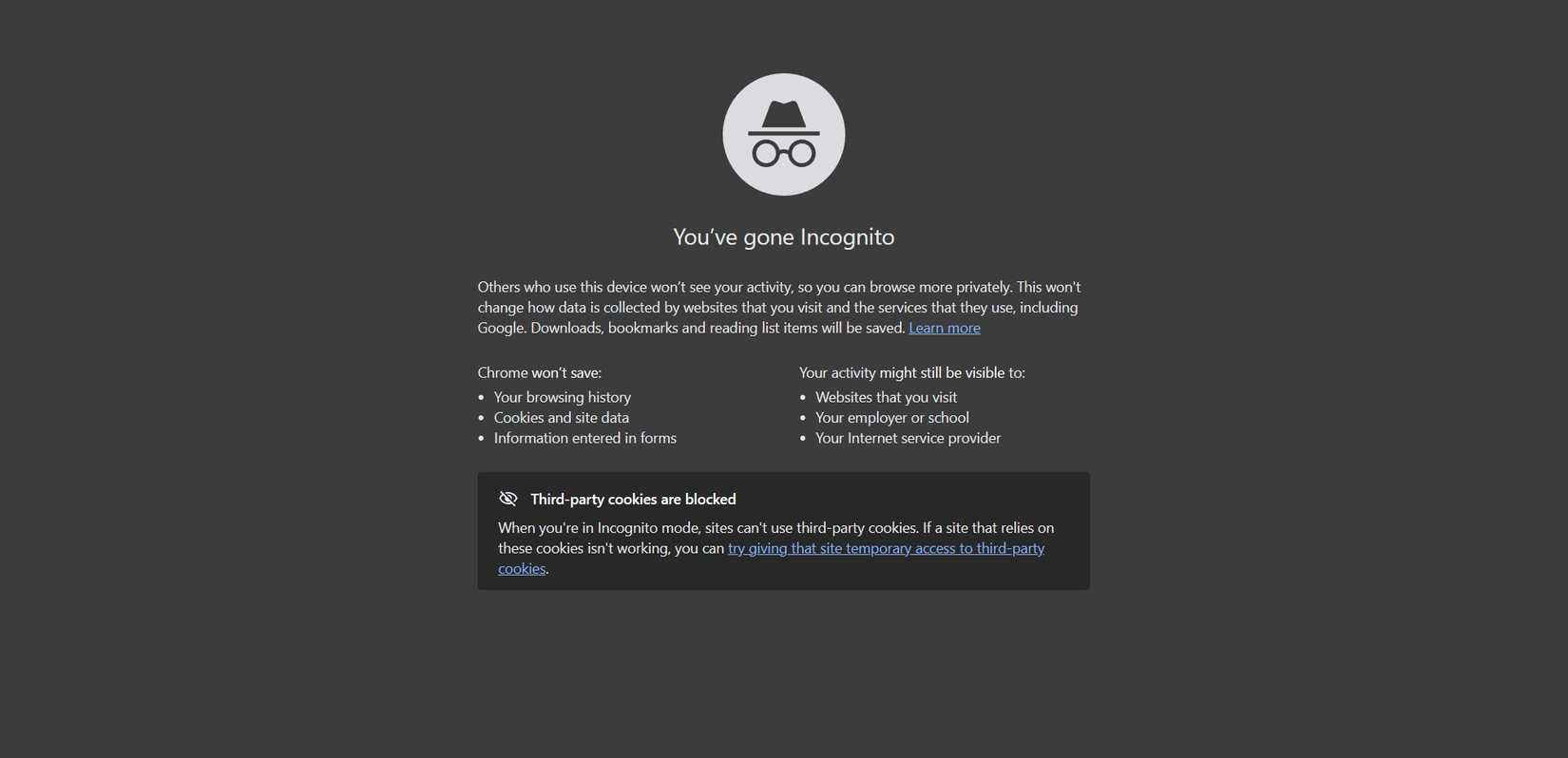You know the ritual. You open an Incognito tab, the browser turns black, and you feel like you’ve vanished. No history, no cookies, no trace—right?
Wrong.
Private browsing was never designed to hide you. It was built to delete your local history, not your digital fingerprint. Your internet provider, your boss, your government, and most of the websites you visit can still see you, plain as day. The “private” in private browsing is one of the biggest misnomers in tech, and it’s been fooling people for nearly two decades.
It’s time to change that.
Incognito and privacy modes are an illusion
You weren’t hidden then, and you’re definitely not hidden now
When Google launched Chrome’s Incognito Mode in 2008, the name alone was enough to make people feel safe. The feature always came with a tiny disclaimer saying your activity “might still be visible to websites, your employer, or your ISP.” But let’s be honest: who reads disclaimers? The marketing copy said “private,” the window turned dark, and the message was clear — you’re hidden now.
Except you weren’t.
“Private” was never a technical term here. It was a psychological one. The feature was designed for shared computers, not personal privacy. It’s a quick way to browse without leaving traces for the next person to see. But over time, the branding blurred the truth. People started using Incognito for security, anonymity, and everything else in between, not realizing that the data isn’t as private as they think.
What private browsing actually does
And more importantly, what it doesn’t
If you’re now desperately wondering about what Incognito, Private, and other “private browsing” modes actually do, you’re in the right place. Private browsing modes do have some uses and privacy functions. They’re just nowhere near the level of privacy you may expect.
When you use Incognito Mode, Chrome ignores your browsing history, cache, cookies, and autofill entries. That’s it.
However, it still tracks your IP address and allows user-specific advertising, and doesn’t block browser fingerprinting or ISP data logging.
So, yeah. It doesn’t do much.
All these people can still see what you’re doing in Incognito Mode
There is still a whole lot of data available
Although Incognito Mode and similar have become bywords for privacy, you’re not invisible. Unfortunately, data collection is still happening, and your private browsing session is really anything but.
- Your ISP can still log every domain you visit and sell that data to advertisers. It can also still track your downloads and bookmarks.
- Websites can fingerprint your browser using your screen resolution, fonts, and hardware details.
- Trackers follow your unique device ID and network patterns, even across sessions.
- Employers or schools monitoring their networks can see your traffic in real time.
Multiple studies have found that private browsing modes are nothing more than a privacy placebo.
For example, a 2017 Princeton University/Stanford University paper matched more than 70 percent of participants to their social media profiles by analyzing browsing links in incognito mode.
Similarly, a 2020 UCL study [PDF] found that participants grossly overestimated the privacy levels offered by private browsing modes.
Five participants thought of the term in connection with network-encrypted communications or secure browser connections (i.e., webpages running HTTPs), three with end-to-end encrypted communications, three with anonymous communications (using Tor or VPN), and three with user authentication (both one-factor and two-factor authentication). One participant (P17) associated “private browsing” with both network encryption and authentication. Additionally, P15 described the term as the ability to browse the Internet “without getting infected with a virus.
In each case, participants were drawn from across the universities, covering a range of technical abilities, but all enrolled in studies.
What you should actually do to stay private online
For a start, don’t use Chrome
Real privacy online is hard to find. It feels like no matter which way you turn, something else is always popping up to demand your data. Or another service has had its data breached, and your personal information is being sold on the dark web (again).
The reality is that being private on the internet, in our hyper-connected world, isn’t easy. However, it’s not impossible. You just need a few tips and tools to get you closer to actual privacy.
There is no one-click fix for privacy. It requires some effort and a little thought, but it is very much achievable.

